Though it may seem like forever ago in paid-search land, back in May Google changed all text ads on the display network to ‘magazine display ads’. Three months later, you are probably asking- why should I care?
What do they look like again?
Here is what Google sent out as an example of the new display ads when they were first announced in May.

Previously, the text ads running on the display network, looked like any other text ad on a Google search. Magazine ads, the modern take on the old text units look… nice. They can compete for any display unit. Google even uses them!
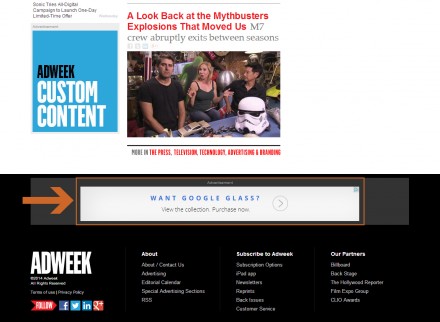
But wait! Not all have that ‘magazine’ look (even on a magazine’s website).
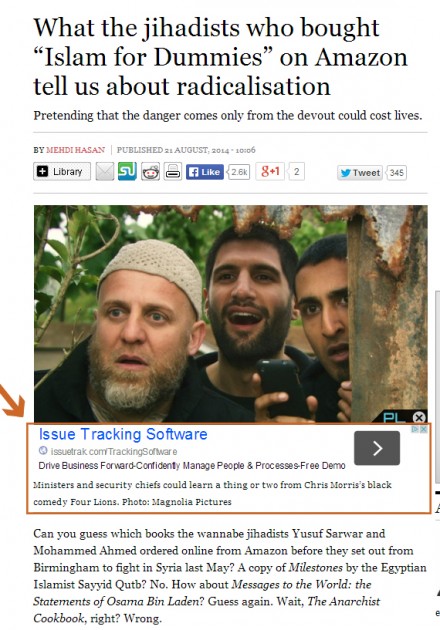
And some are rather… camouflaged.
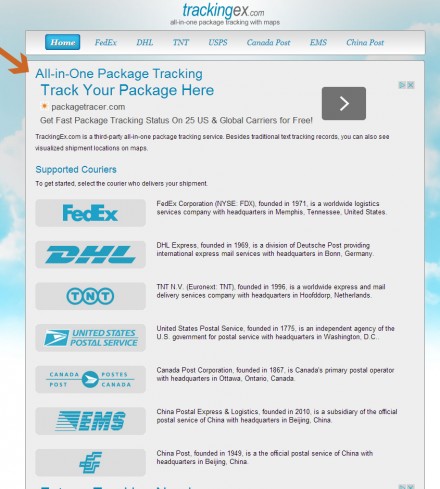

And there have been reports of description lines being cutting off within the ads themselves.
 Source: http://searchengineland.com/impact-google-display-network-magazine-ads-194325
Source: http://searchengineland.com/impact-google-display-network-magazine-ads-194325
The display URL is not always shown until the mouse hovers over the ad, which is good to keep in mind if you are relying on display URLs to explain your ad.

Do these issues translate into accounts?
I started to see funky things happening with display text units in a few accounts. Because these campaigns have been consistently managed and optimized it’s difficult to attribute performance fluctuations to the new format - however! What I have seen with multiple placements has made me take a second look at all display text ads in my accounts. For example, look at these two ad groups running with the same targeting, same ad ‘theme’.
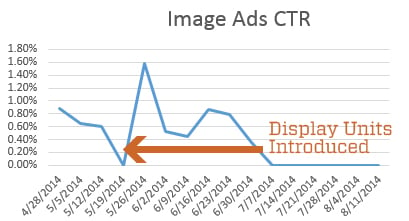
As you can see, there was no distinct impact on image ads, just typical fluctuations.
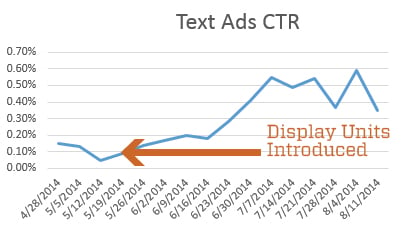
On the other hand, text ad click through rate steadily increased, and leveled off in mid-July. From another account, take a look at the gradual increase in a CTR across a placement campaign, for just display text units.
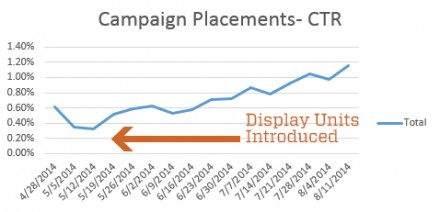
As you can see, the click-through-rate gradually increased. For both of these accounts, we did not see any increase in conversions, or even bounce rate, which might indicate more qualified traffic. We also performed no significant strategic changes in bids, budget or ad content.
What’s the takeaway?
My own experience does not statistically prove that ‘magazine units’ are destroying your account. But after seeing how these new display ads may look on websites, you should question any increase in display traffic. Do not take the increase at face value! Some of these issues can be solved by following best practices and minor investigations.
- Monitor your placements. If you are basing your campaign targeting on anything but selected placements, check on where your ads are showing. Low quality sites can easily sneak their way into placements.
- Use the Display Planner. Duh! You can see where your ads are showing, and get traffic/cost estimates. Do not run display campaigns blind.
- Run text and display ads in separate ad groups. This way, you can control placements based on image vs. text. More so, you can easily monitor for anomalies in traffic or CPC with the text unit display ads.
- If you choose not to select placements on the GDN, qualify your audience in another way. For example, one SEER client had a text unit campaign running without placements, but only targeted similar audience groups. There was no statistical significance between March 15th to May 14th, compared to May 15th- August 15th in CTR or CPC.
- Check ad copy. Make sure your text ad description can either be read as one sentence, or as two sentences. Better yet, pick your placements based on how your text ads will show.
- Ensure quality of conversions. If you have a client where you can track lead quality or conversion value, do it! If your ads are receiving lower quality traffic, than your conversion value may also be lower.
So, three months later, have you noticed any impact on your accounts from ‘magazine display ads’? Have results improved? Remember, only you can prevent unqualified traffic!

